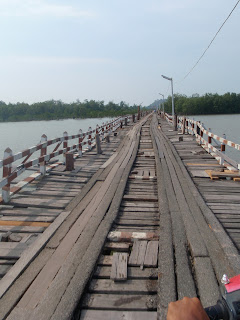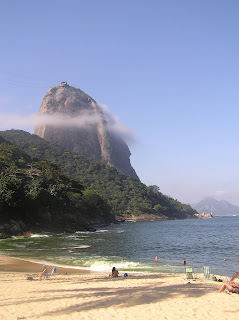I'm back in Rio again. I have to say that the week that I spent in Tanguro (research field station outside of Canarana) was the best week that I had in Brazil this summer. There are a number of reasons for this. I love to be out on the field. Everyday I went to help a different researcher (all ecologists) to learn about their work and their methods. I was exposed to some of the best researchers around today - from Woods Hole Research Center. And, I had a fabulous time with a great group of young researchers. There was a great vibe there at the field station, and I finally felt like myself again after 2 months in Brazil. I also feel renewed and inspired again. I came here to Brazil with a list of objectives and I accomplished almost all of them: 1. Become proficient and functional in Portuguese, 2. Meet with research partners and identify collaborators, 3. Develop the basis for my research and research proposal. Its a great feeling to know that I still have it in me to do this.

Soy plantations outside of the Amazon Forest. Note dense forest to the left. More forest photos below. This day we were taking hemispheric photos during sunrise, before the sun was too high to disturb the quality of the photos. Later these photos would be analyzed to determine the area of forest canopy.

Michela and Paulo collecting soil samples to analyze for nitrogen content and thus, ability to sustain plants. This area is a test plot to determine the effect of fire on the forest. Michela was leading this study. She is a PhD student from Pará, Brazil who's Master's research (on the nutrient availability in forests) was outstanding enough to be published in Nature. Also, bands on the trees are used to measure the growth of the trees over time.


Shelby and Paulo. Paulo was my wonderful host here in Tanguro and colleague at UF. He works for IPAM and is studying the effect of fire on trees. In the photo we went out at 5.30 am to take readings of the LAI (Leaf Area Index-- more or less how much light is available to the leaves based on the density of the leaf canopy) in the forest. Shelby is studying the differences between water quality of soy plantations and forests. Paulo was training her how to use the equipment and program for LAI measurements.

Another day I went out with Frank-- a PhD students from Germany-- and his assistant Marcus. Frank's study is to measure if there is a difference in water quantity between soy plantations and forests. This day they were finishing measurement for the volume of a reservoir. The coordinator of the field station-- Oswaldo-- built them this little boat to use for their measurements, but the entire staff of the field station was waiting for them to finish so that they could use the boat to go fishing.

Here's Oswaldo (left) and Darison, both who have probably been featured numerous times in various articles and other such venues, since there is a lot of high profile research coming out of this field station.

Some photos from the field station. This is Paulo's house. Mike is in the chair-- director of IPAM who was visiting the projects for a month before heading back to Wood's Hole Research Center. The house is well shaded by mango trees and probably in the best condition of all of the houses at the center of the field station.

Me and Erika (undergrad from the Veterinary School doing a small project) in our first little house. We got moved out to the farther house, and we were happy to go since the farther house was also known as the "fun house". I was also very glad to leave the giant cockroach that was living in the bathroom.

The "fun house" where we... had lots of fun! Barbeques, dancing and such.

Erica, Marcus and I in our room.

Breakfast: (starting left) Michela, Frank, Erika, Me, Franca (Frank's visiting girlfriend), and Marcus.

Ema (rhea) with 16 babies. They lived around the field station.

Another popular species around the field station-- burrowing owl. Other animals spotted by the researchers in the past month include lots of armadillas and antas (tapir), a few anteaters and monkeys, and one jaguar and sloth.

This day we went to a reservoir to help Frank carry out some rain collecting equipment that had been left there a previous year by a previous researcher. Frank intended to use this equipment again after refurbishing them.

Erika and I with our snake guards-- I never saw a single snake BTW.

Part of my despertido crew at the bus station. I arrived at an empty bus station, but I left with a going away party of 12 people. (Left to right: Marcus, Frank, Franca, Erika)


















.JPG)
























